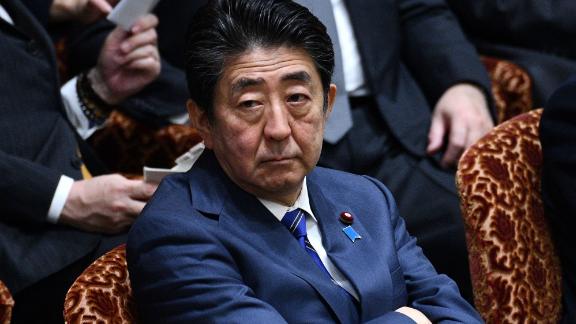 If you stop a random person on the street in China, there’s a pretty good chance their surname would be either Wang, Li, Zhang, Liu or Chen.
If you stop a random person on the street in China, there’s a pretty good chance their surname would be either Wang, Li, Zhang, Liu or Chen.–
–
With 1.37 billion citizens, China has the world’s largest population, but has one of the smallest surname pools. Only about 6,000 surnames are in use, according to the Ministry of Public Security. And the vast majority of the population — almost 86% — share just 100 of those surnames.
–
–
To put that in perspective, the United States — with less than a quarter of China’s population — reported 6.3 million surnames in its 2010 census. The majority of those names were only reported once.
–
–
There are a few reasons for this: China is less racially diverse than countries such as the US, where a wealth of minority groups increase surname diversity. It also has to do with language; you can’t just add a random stroke to a Chinese character and create a new surname, the way you can add a letter to an English name.
–
–
But there’s also another factor at play: technology.
–
–
China’s digital revolution has transformed daily life, and many of these systems rely on a limited list of standardized Chinese characters.
–
–
That means people with rare characters in their names, which aren’t compatible with existing computer systems, can get left behind — pushing many to change their names for the sake of convenience, even if it means abandoning centuries of heritage and language.
–
How some surnames went extinct
–
It wasn’t always this way. Throughout its long history, China has recorded more than 20,000 surnames, according to Chen Jiawei, an associate professor at Beijing Normal University, who has researched Chinese surname distribution. Some researchers place that estimate at up to 23,000 surnames.
–
–
“The culture of surnames has been passed down in our country for thousands of years, with a deep and broad influence,” said the Ministry of Public Security in its 2019 annual nationwide survey on surnames. “Throughout history, the surnames have developed and differentiated, forming more than 6,000 surnames in use today.”
–
–
The first records of Chinese surnames stretch back to “the era of bronze, bamboo and silk script,” according to the ministry — referring to when people wrote on raw materials in the Shang and Zhou dynasties (1600-256 BC), before the invention of paper.
–
–
By the Song Dynasty (960-1279 AD), a book called the “Hundred Family Surnames,” listing several hundred of the most common surnames, had become a classic text taught to children.
–
–
China’s history, full of migration, political turmoil and warfare, meant people’s names were often in flux — which is partly why many have since vanished. Sometimes, ancient rulers and clans would adopt the names of their state or fiefdom; others were granted new royal surnames by emperors. Over the dynasties, ethnic minorities and nomadic groups also adopted Han Chinese names, sometimes given no choice during periods of conflict or intense Sinicization campaigns.
–
–
People sometimes changed their names for convenience, too — for instance, simplifying complex characters by adopting similar-sounding ones with fewer strokes. Other times they did it out of superstition, abandoning a name believed to bring ill fortune, said Chen, the associate professor.
–
–
Name extinction is also a naturally occurring phenomenon called the Galton-Watson process, which posits that in patrilineal societies, surnames are lost or die out over time with each new generation as women take on their husbands’ surnames.
–
–
For instance, if a surname was concentrated in a particular area and there weren’t enough male descendants, the name could “disappear naturally,” said Chen. Meanwhile, large families with more resources were able to have more children, thus expanding and spreading the family surname.
–
–
Researchers consider China a common example of this process — partly because the country’s long history means it has lost more names over time, compared to younger countries or countries where surnames didn’t become common practice until more recently.
–
–
“The Chinese population uses fewer surnames and includes much larger isonymous groups than Caucasoids or Japanese because surnames appeared in China at least 3,000 years earlier than in Europe or Japan,” said researchers from Stanford University and the Chinese Academy of Sciences in a 1992 study. “Since that time, when the population was much smaller than now, many surnames have become extinct.”
–
–
Obstacles in the digital age
–
Rare or uncommon surnames have been dying out for centuries — but they face an accelerated crisis in modern China.
–
–
For many years, people with rare characters in their names could get by, since documents and letters were largely handwritten. But it became near-impossible to use these names in the written form with the rise of digital technology — and a new digitized national ID system.
–
–
The main problem is that not all Chinese characters have been coded into computer systems. In 2017, there were about 32,000 characters coded in the Chinese character database, according to state-run news agency Xinhua — leaving out tens of thousands of characters.
–

–

With China roaring into the digital age, nearly everything — from making appointments to buying train tickets — has moved online. That meant a world of trouble if you happened to have a rare character in your name, that might not be in the database. As of 2017, up to 60 million Chinese citizens faced this predicament, according to Xinhua.
–
–
One such man, Zhong Weihua, originally had a rare character in his name that wasn’t registered in digital systems and font libraries — meaning he couldn’t open online banking accounts, sign up for phone plans, use online payment, or complete other everyday tasks, Xinhua reported. Eventually, he felt he had no choice but to change his name to something more common.
–
–
China’s digitized ID cards made the problem even more pressing. The first generation of these cards allowed people to hand-write their names on — but the second-generation cards, launched in 2004 and dubbed “smart cards” for their digital features, exclusively used computer-printed text.
–

–

Ma Cheng, a woman from Beijing, was one of those unable to receive a digital ID card due to her rare surname. The character for “ma” in her name was particularly obscure; her grandfather had found it while looking through the dictionary, she told local media in 2008.
–
–
Her first-generation ID card, with the character handwritten on, had expired — but officials refused to grant her a second-generation card because the character wasn’t in the government’s computer database. They told her to change her name because it was “troublesome,” she told the New York Times in 2009.
–
–
But she was reluctant to do so. For one, it would create a discrepancy between her ID card and other documents like her university diploma. Besides, she said, “I can’t think of another, better name.”
–
–
How do you standardize a language?
–
Another factor exacerbating the increasing commonness of Chinese names is the government’s efforts to standardize and regulate the language.
–
Various dialects of Mandarin are spoken between the provinces, with some so different that speakers are unintelligible to each other. Among these, the Beijing-based Standard Mandarin is the lingua franca — and was formally declared the national spoken and written language in 2000.
–
Various dialects of Mandarin are spoken between the provinces, with some so different that speakers are unintelligible to each other. Among these, the Beijing-based Standard Mandarin is the lingua franca — and was formally declared the national spoken and written language in 2000.
–
However, written Mandarin was not clearly standardized at the time, with discrepancies depending on factors like geographic region and population. So, agencies and experts set out to compile a list of characters they could agree on, and collectively use in the future.
–
–
The result was the General Standard Chinese Character Table, published in 2013 and praised by the State Council as “a new starting point” for standardized Chinese.
–
–
It consists of more than 8,000 characters, which is just a fraction of the total number of Chinese characters in existence. Yet this regulated list of common characters was implemented across society in education and teaching, press and publishing, information processing, computer fonts, Chinese reference books, and more.
–
–
It also meant a smaller pool of characters that people were encouraged to choose from for their names.
–
–
After the table was issued in 2013, the Ministry of Public Security ordered local police departments to “limit the new names and changes in the population information management system to the General Standard Chinese Characters Table — effectively solving the problem of computing rare characters in names,” according to the Ministry.
–
–
That declaration turned out to be premature. People faced issues of non-computable names long after the table was released — one problem being the limited character database in computer systems across institutions and government agencies, which had forced Zhong Weihua to change his name.
To try to address this, experts have increased the database from 32,000 characters to 70,000 characters, according to the government. They’re still working to expand it to include more than 90,000 characters, said Chen, the associate professor.
–
–
Even Chinese officials acknowledge there is more work to be done. Sometimes, even if the rare characters are in the table, they aren’t supported by font libraries, operating systems, input methods, and other customized information systems.
–
–
These limited systems “cause inconvenience to people’s lives” and “urgently need to be upgraded,” according to the Ministry of Education. In a separate statement last year, the Ministry of Public Security agreed that “we must solve the problem,” noting “people’s work and life are more and more inseparably connected with the Internet.”
–
–
But it’s not just a matter of inconvenience. Chinese surnames are central to people’s identities; they hold origin stories, reveal historic patterns of migration, and represent a direct tie to a person’s ancestry and heritage. To give up a surname is to sever a part of family history that can stretch back for centuries.
–
–
This struggle, and the cost of adapting to the modern age, was exemplified in a village in the eastern Shandong province in the late 2000s. Many villagers shared the ancestral name “Shan” — but when they began applying for the digitized ID cards, local officials advised them to change their surnames to “Xian,” a similar-sounding but more common character, according to state-owned news service CNTV.
–
–
In the end, more than 200 villagers were forced to change their surnames, a source of sorrow for many.
–
–
(For the source of this, and many other equally intriguing articles, please visit: https://www.cnn.com/2021/01/16/china/chinese-names-few-intl-hnk-dst/index.html/)


















